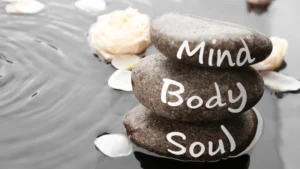Introduction:
In our fast-paced and hectic world, finding moments of tranquility and relaxation can seem like an elusive quest. However, by tapping into the power of self-hypnosis, you can teach your mind to unwind and embrace a state of deep relaxation. In this article, we explore the art of self-hypnosis and how it can be a valuable tool in cultivating inner calmness and rejuvenation. Discover the transformative benefits of self-hypnosis as we guide you through the process of achieving a peaceful and tranquil state of mind.
1. Understanding Self-Hypnosis:
Self-hypnosis is a self-induced state of deep relaxation and focused concentration that allows you to access your subconscious mind. By entering this state, you can bypass the chatter of the conscious mind and tap into the subconscious, where profound changes can occur. Through repeated practice, self-hypnosis becomes a powerful technique for achieving relaxation, reducing stress, and promoting overall well-being.
2. Establishing the Ideal Environment:
Creating a peaceful and conducive environment is essential for successful self-hypnosis. Find a quiet space where you can relax without interruptions. Dim the lights, play soft background music, and ensure you are in a comfortable position, either sitting or lying down. This dedicated space becomes your sanctuary for relaxation and self-discovery.
3. Deepening Relaxation with Induction:
Begin your self-hypnosis session by focusing on your breathing. Take slow, deep breaths, allowing your body and mind to gradually unwind. With each exhalation, release any tension or stress you may be carrying. As you relax, use a soothing voice or an audio recording to guide yourself into a state of deep relaxation. Visualize yourself descending a staircase or drifting into a peaceful garden, immersing yourself in the sights, sounds, and sensations of tranquility.
4. Positive Suggestions for Relaxation:
Once in a relaxed state, introduce positive suggestions and affirmations to deepen your relaxation experience. Repeat phrases such as “I am calm and serene,” “Every breath I take brings me deeper into relaxation,” or “My mind and body are at peace.” These suggestions help reprogram your subconscious mind, reinforcing a state of relaxation and tranquility.
5. Progressive Muscle Relaxation:
Progressive muscle relaxation is a technique that involves systematically tensing and releasing different muscle groups in the body to induce deep relaxation. Starting from your toes and working your way up to your head, tense each muscle group for a few seconds and then release, allowing a wave of relaxation to wash over you. This technique helps release physical tension and promotes a profound sense of relaxation.
6. Reawakening and Integration:
As your self-hypnosis session nears its end, gently guide yourself back to a state of wakefulness. Count from one to five, and with each count, become more alert and energized. Take a few moments to reflect on the experience, noting the feelings of relaxation and tranquility that you have cultivated. Carry these feelings with you throughout your day, integrating them into your daily life.
Conclusion:
Self-hypnosis is a powerful tool for teaching your mind to relax and embrace a state of profound calmness. By establishing the ideal environment, deepening relaxation through induction, using positive suggestions, and practicing progressive muscle relaxation, you can tap into the transformative benefits of self-hypnosis. Make self-hypnosis a regular practice, dedicating time to nurture your mind, body, and spirit. Discover the serenity that lies within and experience the blissful rewards of self-induced relaxation. Start your journey towards inner calmness today and unlock the power of self-hypnosis for a more peaceful and fulfilling life.





